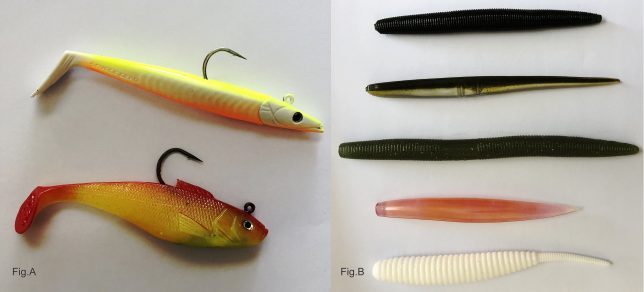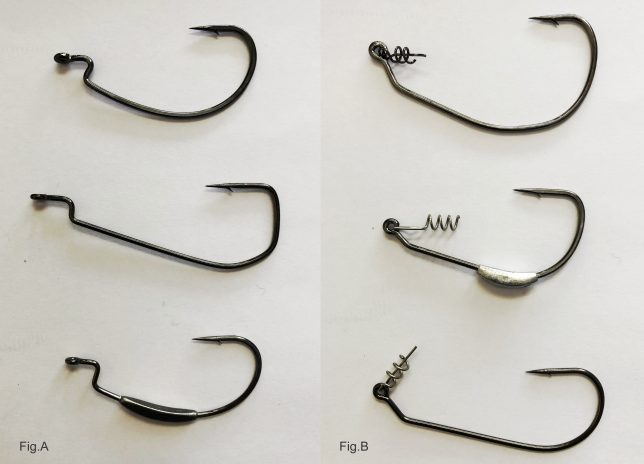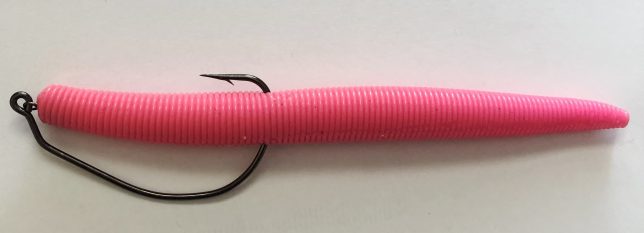On first acquaintance, lure fishing for bass, can appear daunting to the novice bass angler and perhaps even more so when they start to look at fishing with soft plastics. Off the shelf pre-rigged lures may seem harmless enough, and those with previous lure angling experience may already be familiar with them. However, when starting out using the various stick baits that have recently become so popular it may be confusing as to where to start.
Like many things in life, you can make rigging soft plastics as simple or as complicated as you like. The point of this blog is to give some simple practical information to get you up and running with a minimum of fuss.
What do we mean by ‘stick baits’?
In short a whole variety of soft plastics that look like sticks! There’s a vast array of these on the market nowadays, and most anglers will have their favourites depending on their preferred styles of fishing, or possibly previous success. If you’re just starting out with these lures then a few of packets of something like, DoLive sticks, Slug-Gos, Wave Worms or Albie Snaxs would be a good place to start but there are literally hundreds to choose from.

What type of hook do we need?
There are a couple of hook types of interest, the main difference between them being how they ‘fix’ the lure in place. ‘Offset’ style hooks have a notch or sharp bend in the hook shank near the eye, whereas ‘hitchhiker’ style hooks utilise a coil. Both styles of hook can be weighted or un-weighted.

Common hook sizes are 2/0 to 5/0 although to rig some larger baits effectively you may require hooks as large as 7/0. A couple of other considerations are the strength of the wire and the ‘gape’ of the hook (the width of the hook). Unless you require some finesse, it’s always worth considering heavy duty wire as there is always a risk that lighter wires may bend open and unintentionally release your fish – and that’s guaranteed to happen when you have a big girl on the sharp end! If you need hooks with a wider gap look for hook types that are EWG – Extra Wide Gap.
How do we choose the correct hook for the bait?
Initially there is going to be some trial and error but with experience you will soon work out which are your preferred combinations of hooks and lures. Things to consider and have a play around with include:
- As a general rule of thumb make sure the hook gape is a minimum of around twice the diameter of the lure.
- Thinner lures may be more suited to Texposer style straight shank offset hooks whereas fatter lures will generally require a wide gape hook.
- Make sure the hook size and wire gauge doesn’t overwhelm the action of the lure. Some lures have slots or other types of indicator which give some guidance to the hook size.
- In heavy conditions and with powerful casting you may need to consider using hitchhiker style hooks or, if using offset hooks, be prepared to glue the lure – otherwise lures may slide down the hook shank due to the forces of repeated casting.
- Make sure the hook can move relatively freely through the body of the lure – be especially careful with some thicker lures and those with slightly harder plastic. A small drill bit may be handy to create an opening in the lure that better allows the hook point to be exposed when a fish takes, thus increasing chances of hooking up.




It maybe best to head out with a selection of weighted and un-weighted lures already rigged, and to have them easily accessible when you’re fishing. When you hit a run of fish it’s inevitable that lures are going to get damaged and having a few ready to hand will help you get back fishing quickly. If you have to start rigging from scratch you may find your mates bagged up and the fish have moved on before you’re done!
Some optional extras
It’s definitely worth having some super glue when using offset style hooks in case you need to fix the lures more securely and some Mend-it, or similar glue, is very handy for repairing torn and damaged lures. You may also wish to consider some small rattles to insert into the bodies or tails.
Happy rigging!
© Bass Anglers’ Sportfishing Society 2020